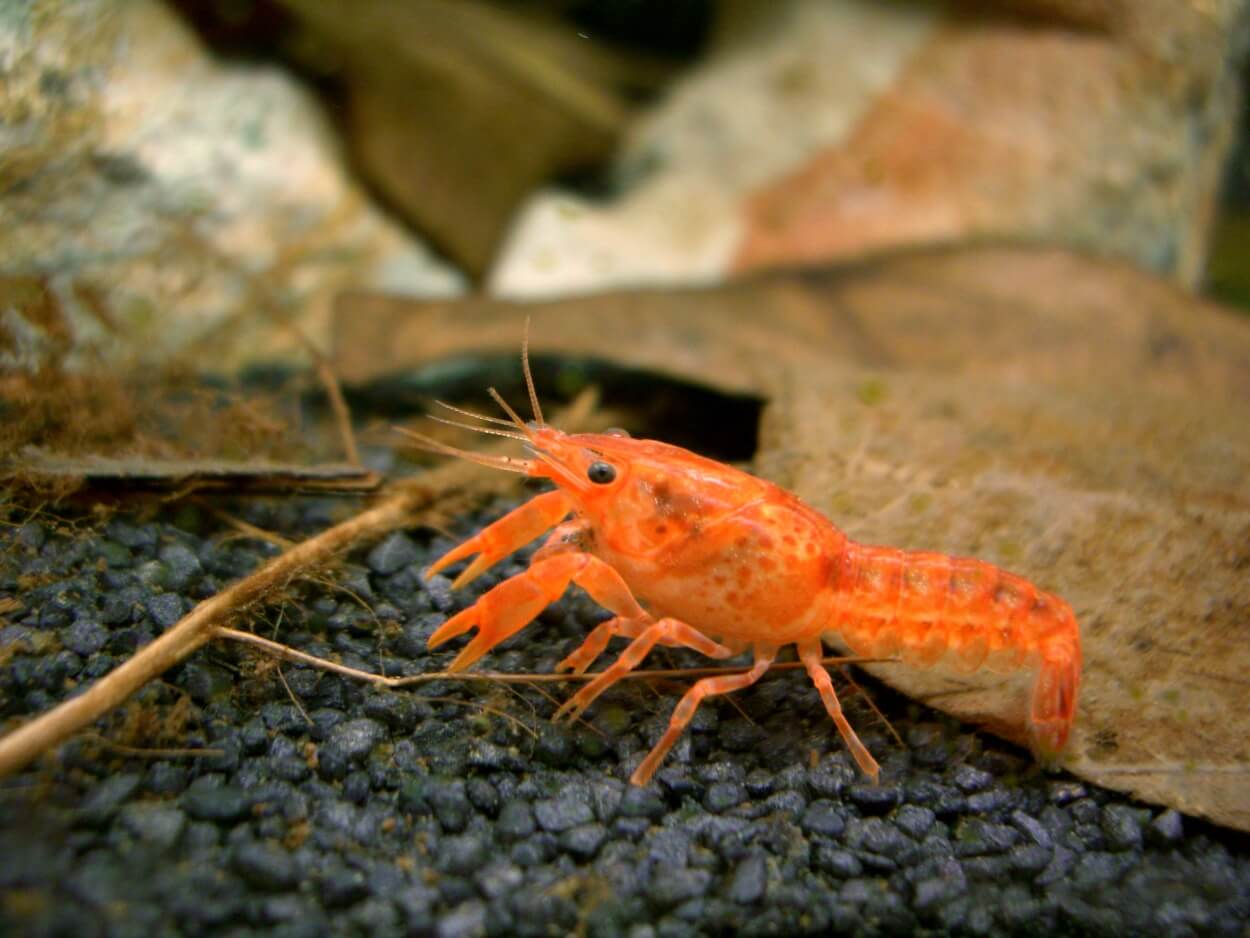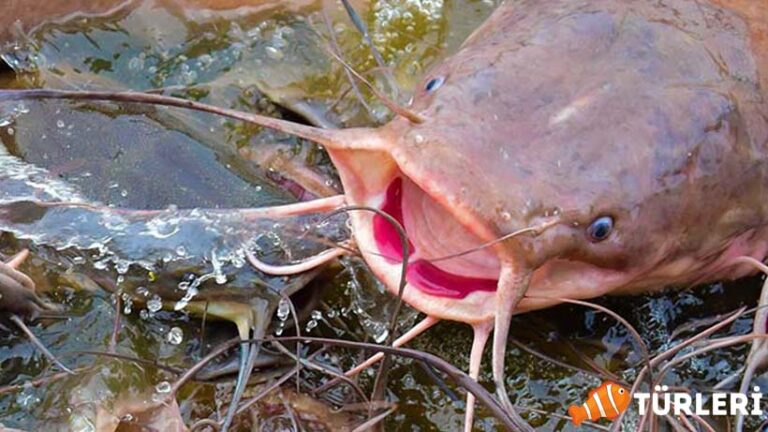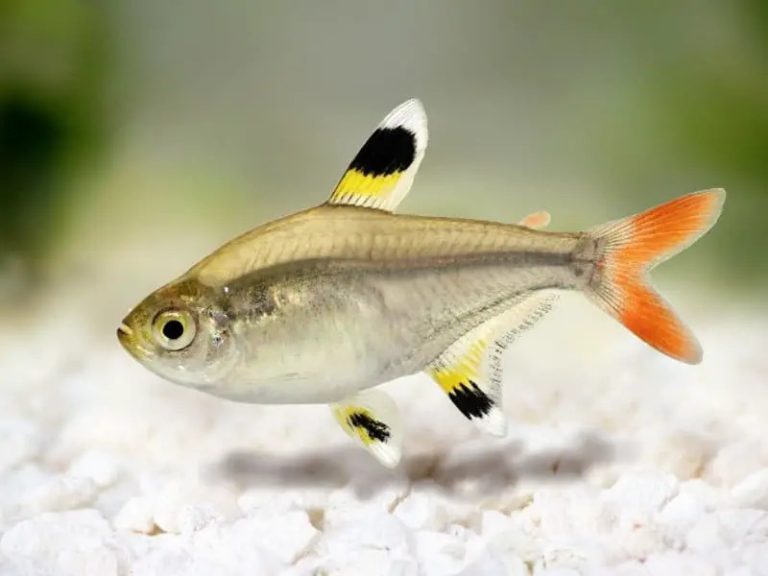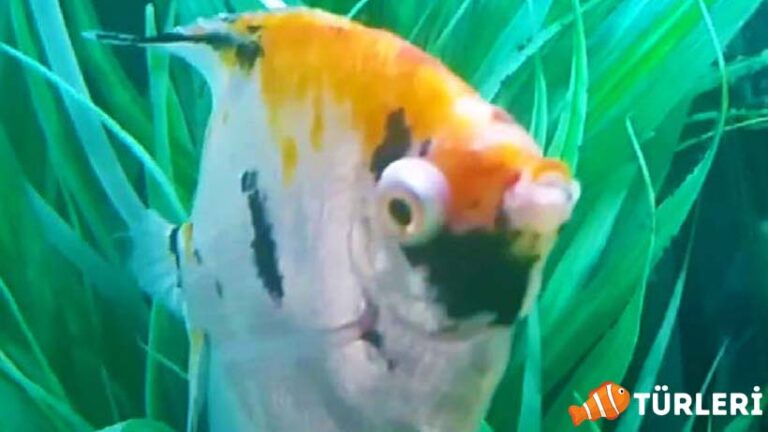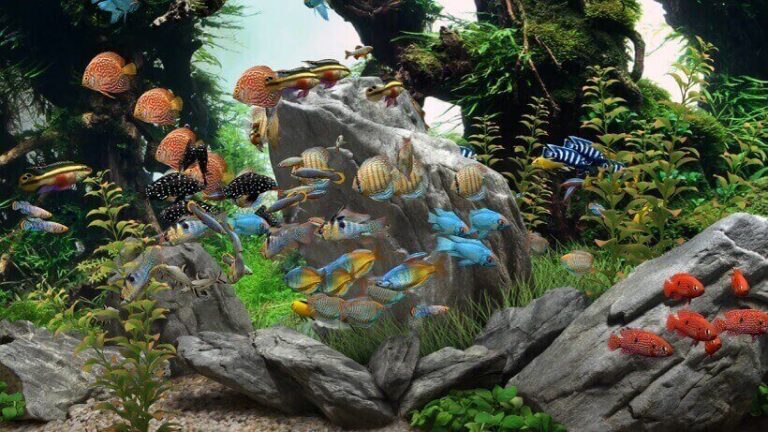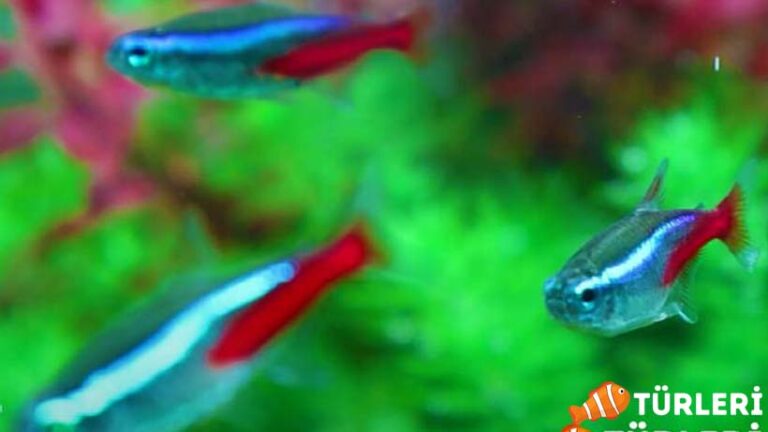Dwarf Crayfish
Meet the Dwarf Crayfish, a petite freshwater marvel that’s a favorite among aquarium enthusiasts. These mini crustaceans bring lively dynamics to a tank without demanding extensive care. Read on to delve into their fascinating world, from origin and behavior to aquarium conditions and care tips.
Species Summary:
| Scientific Name: | Cambarellus |
|---|---|
| Origin: | North America |
| Diet: | Detritus, algae, plant matter, and small invertebrates |
| Behavior: | Peaceful and non-aggressive |
| Behavior Towards Their Own Species: | Generally peaceful but can be territorial at times |
| Swimming Zone: | Bottom |
| Water Temperature: | 65°F – 80°F (18°C – 27°C) |
| Water Hardness: | 3-12 dKH |
| pH Level: | 6.5 – 8.0 |
| Minimum Aquarium Volume: | 10 gallons |
| Adult Size: | 1.5 – 2 inches (3.8 – 5 cm) |
| Reproduction: | Oviparous (Egg-laying) |
| Lifespan: | 1-2 years |
| Care: | Moderate; requires stable water conditions and hiding spots |
Appearance and Size
Delving into the visual characteristics of the Dwarf Crayfish, one quickly appreciates its intricate and detailed beauty. These tiny crustaceans sport a hard exoskeleton, commonly presenting in shades of brown, orange, or even a muted blue. Their bodies are segmented with distinct sections: the head (cephalothorax) and the abdomen. Their two main claws, called chelae, are often a focal point, especially in males where they are larger and more pronounced. Various species might exhibit unique patterns or color variations on their shells, ranging from plain to dotted or striped.
Size-wise, the Dwarf Crayfish remains quite small throughout its life, making it an excellent choice for hobbyists who may not have the space for larger aquatic creatures. As they mature, they typically reach a length of 1.5 to 2 inches (3.8 to 5 cm). This compact size allows them to be housed comfortably in smaller aquarium setups. Despite their diminutive stature, they have a captivating presence in an aquarium. Their delicate movements, combined with their distinct appearance, make them a fascinating subject for observation. When considering their size in conjunction with their striking appearance, it’s easy to see why so many aquarium enthusiasts are eager to include them in their aquatic collections.
Lifespan
One of the intriguing aspects of the Dwarf Crayfish is its relatively short, yet eventful lifespan. Typically, these tiny crustaceans can expect to live for 1 to 2 years in captivity. While this might seem brief, especially when compared to some of their aquatic companions, it’s essential to understand that their entire life cycle – from birth to maturity to reproduction – is compressed into this timeframe.
Several factors influence the longevity of these captivating creatures. First and foremost, the quality of their environment plays a pivotal role. Maintaining stable water parameters, providing a diet rich in essential nutrients, and ensuring that their habitat is free from undue stress and predatory threats can all contribute to maximizing their lifespan. Regular water changes, appropriate filtration, and avoiding overcrowded conditions are vital in this regard.
Moreover, molting, a process where the crayfish sheds its exoskeleton to grow, is a critical phase in their life. It’s during these periods that they are most vulnerable to threats, as their new shell takes time to harden. Providing ample hiding spaces in the tank can offer them the security they need during such moments. By paying attention to these needs and ensuring a well-maintained habitat, aquarists can enjoy the company of their Dwarf Crayfish for the full extent of their natural lifespan.
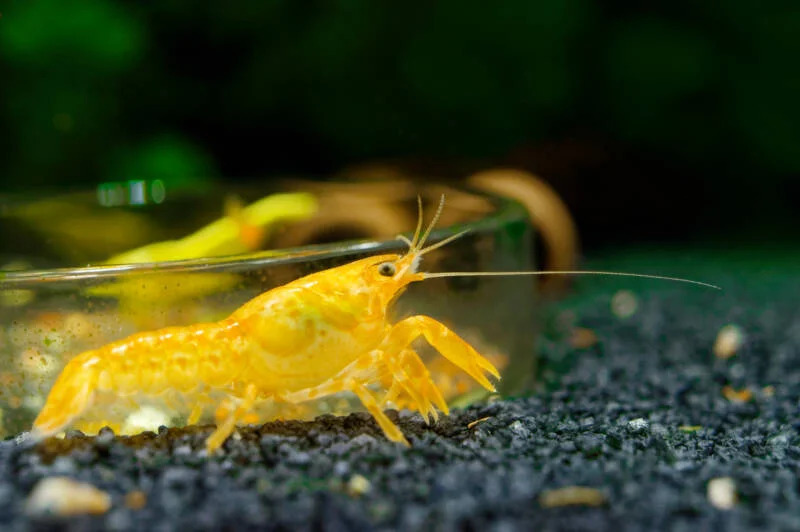
Diet
Dwarf Crayfish are not overly picky eaters, which is part of their appeal to aquarium enthusiasts. Being omnivores, they thrive on a diverse diet that includes both plant and animal matter. In their natural habitats, they often feed on detritus, algae, decaying plant matter, and small invertebrates. Their tendency to scavenge and forage makes them great cleaners, helping to keep a tank environment neat by consuming any leftover food and organic debris.
For those keen on ensuring their crayfish get a balanced diet, commercial sinking pellets or wafers formulated for crustaceans are an excellent choice. These are typically packed with the necessary nutrients to ensure their health and vibrancy. Alongside these staples, occasional treats can be introduced. Blanched vegetables such as zucchini, spinach, or peas are often relished. Protein boosts can come from offering them bloodworms, brine shrimp, or daphnia, either live or frozen.
It’s essential to observe their feeding habits and adjust portions accordingly. Overfeeding can lead to water quality issues, while underfeeding can cause malnourishment. A good rule of thumb is to provide an amount they can consume within a few hours. By maintaining a varied and balanced diet, Dwarf Crayfish not only showcase their most vibrant colors but also exhibit active and engaging behaviors that are a joy to observe.
Water Parameters
Maintaining the right water conditions is paramount for the well-being of any aquatic creature, and the Dwarf Crayfish is no exception. These crustaceans hail from freshwater habitats, and their health and vitality directly correlate with the water parameters in their tank.
Temperature is a critical component. Dwarf Crayfish thrive in water temperatures ranging from 65°F to 80°F (18°C to 27°C). Consistency is key; sudden fluctuations can lead to stress and adversely affect their health. Heaters with thermostats can help in maintaining this range, especially in cooler environments. Water hardness, another vital parameter, should be kept within 3-12 dKH, ensuring a stable environment that’s conducive to their molting process. The pH level of the water is equally essential, with a slightly acidic to slightly alkaline range of 6.5 to 8.0 being ideal.
Regular monitoring is crucial to keep these parameters in check. Investing in a reliable aquarium test kit can be a game-changer, allowing for periodic checks and adjustments when needed. Also, frequent water changes – replacing around 20-25% of the tank water with fresh, dechlorinated water every couple of weeks – can help in keeping the environment stable and free of harmful contaminants. By diligently attending to these water parameters, aquarists can ensure a safe and comfortable habitat for their Dwarf Crayfish.

Tank Setup
Creating the ideal environment for Dwarf Crayfish is more than just filling a tank with water. Designing a habitat that closely mimics their natural surroundings not only ensures their well-being but also provides an aesthetically pleasing setup for enthusiasts to enjoy.
Starting with the basics, a tank of at least 10 gallons is recommended for these small crustaceans. While they might be tiny, they cherish space to roam, forage, and stake out little territories. The substrate is vital, with fine sand or small-sized gravel making for ideal choices. These allow the crayfish to dig and burrow, which is a natural behavior they frequently exhibit.
Decorations, while enhancing the tank’s visual appeal, serve functional purposes too. Smooth rocks, driftwood pieces, and aquatic plants like Java fern or Anubias can be incorporated. These elements offer hiding spots, especially crucial during their vulnerable molting phases. When selecting plants, however, be mindful that Dwarf Crayfish might occasionally nibble on them or uproot them during their explorations. A filter is indispensable, not just for maintaining water quality but also for generating gentle water flow, replicating their natural freshwater habitats. Lastly, while they aren’t avid climbers, a tight-fitting lid is advisable to prevent any adventurous crayfish from making unexpected escapes. By carefully considering each element of the tank setup, one can create a thriving and engaging home for their Dwarf Crayfish.
Behavior and Tankmates
Dwarf Crayfish are captivating not just for their appearance but also for their intriguing behaviors. Typically peaceful and non-aggressive, they’re often seen foraging along the bottom of the tank, searching for food and organic debris. They are diligent cleaners, helping to maintain a neat tank environment. Another noteworthy behavior is their propensity to burrow and dig, creating tiny hideaways in the substrate, especially during molting periods when they seek refuge until their new exoskeleton hardens.
While they are generally sociable creatures, there can be occasional displays of territorialism, especially among males or during breeding seasons. They might stake out a specific area and ward off others who venture too close. However, these skirmishes are usually brief and not overly aggressive.
When considering tankmates, it’s crucial to choose species that are peaceful and won’t see the Dwarf Crayfish as a meal. Small fish like tetras, guppies, and rasboras are usually good companions. Snails and shrimps can also cohabitate harmoniously with them. However, larger or aggressive fish, such as cichlids or large catfish, can pose a threat and are best avoided. It’s also worth noting that, while Dwarf Crayfish can coexist with their kind, providing ample space and hiding spots can prevent potential territorial disputes. In essence, with careful selection and observation, a harmonious tank community can be achieved, highlighting the best of Dwarf Crayfish behaviors and interactions.
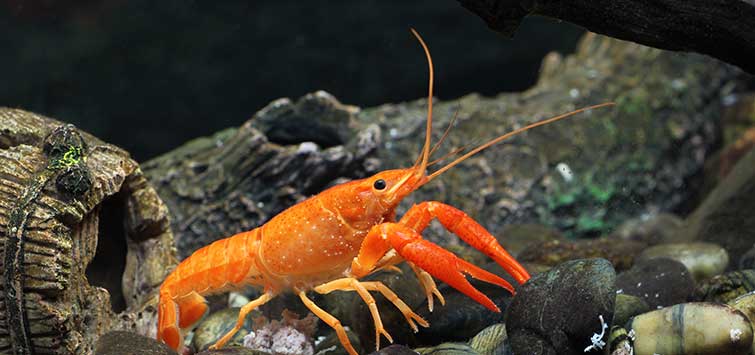
Breeding
Breeding Dwarf Crayfish in captivity can be a rewarding endeavor, allowing enthusiasts to observe the fascinating life cycle of these tiny crustaceans. The process is relatively straightforward, but understanding their reproductive habits and providing the right conditions are essential for success.
The first indication of breeding readiness is when a male crayfish starts to court a female. The male deposits sperm packets onto the female, who later fertilizes her eggs. After fertilization, the female attaches the eggs to the underside of her abdomen, using her swimmerets. During this period, she becomes increasingly reclusive, seeking out quiet and secluded spots in the tank. It’s crucial to offer ample hiding spaces, like caves or dense plant areas, to ensure her comfort and safety. The eggs, often numbering between 20 and 50, will hatch in about 3-4 weeks, releasing tiny crayfish fry.
The newly hatched fry are miniature versions of the adults but are incredibly vulnerable. It’s recommended to house them in a separate rearing tank or use a breeding box to protect them from potential predators, including adult crayfish. Feeding the young ones a diet of finely crushed fish flakes, baby brine shrimp, and micro worms will ensure healthy growth. With patience and careful attention to their needs, hobbyists can successfully breed and raise a new generation of Dwarf Crayfish, adding a new dimension to their aquarium experience.
FAQs
How often do they molt?
Molting is a natural process for crayfish, allowing them to grow. The frequency varies depending on their age. Younger crayfish molt more often as they grow, which can be every few weeks. As they near adulthood, the frequency decreases, and they might molt once every couple of months or so.
Can I keep multiple Dwarf Crayfish in one tank?
Absolutely! Just ensure your tank has ample space and plenty of hiding spots. This helps reduce any territorial squabbles and gives each crayfish its own little sanctuary, especially during molting.
Are Dwarf Crayfish aggressive?
Generally, no. Dwarf Crayfish are peaceful creatures. However, they can display minor territorial behaviors, especially during breeding seasons or when males are involved. But these instances are typically more about posturing and less about actual combat.
What should I feed my Dwarf Crayfish?
These little crustaceans are omnivores and pretty easy to please. They’ll munch on algae, detritus, and any leftover food from fish. For a balanced diet, you can offer them commercial sinking pellets made for crustaceans. They also enjoy occasional treats like blanched veggies (think zucchini or spinach) and small protein sources like bloodworms or brine shrimp.
How big do Dwarf Crayfish get?
Dwarf Crayfish are aptly named for their size. As adults, they typically measure between 1.5 to 2 inches (3.8 to 5 cm). This makes them perfect for smaller aquarium setups or for hobbyists who don’t have the space for larger aquatic creatures.

